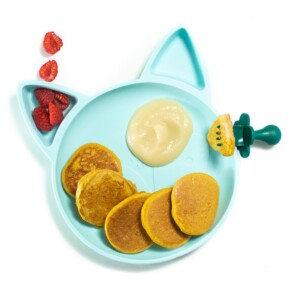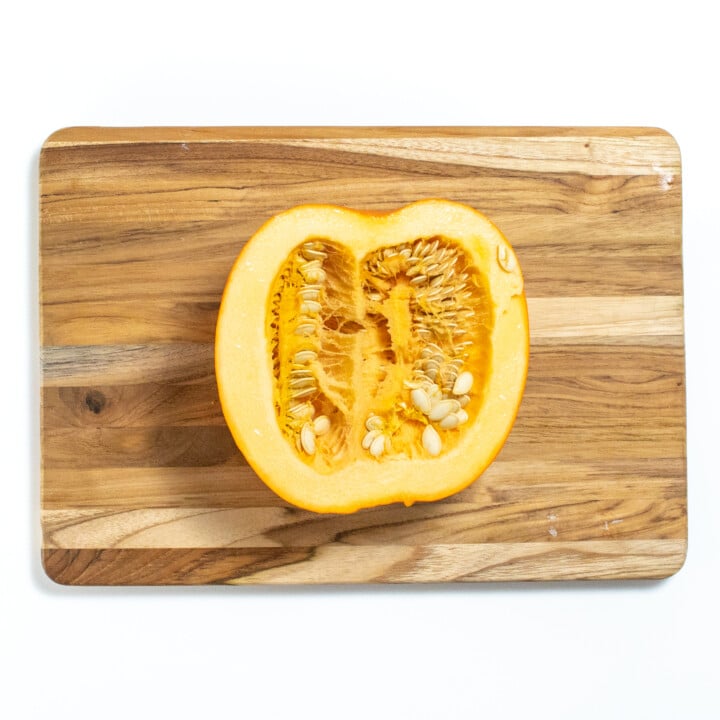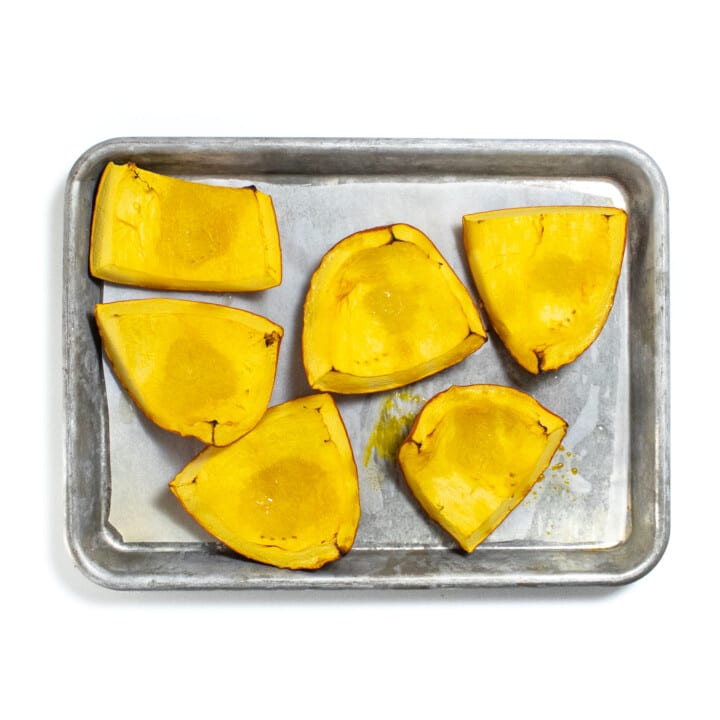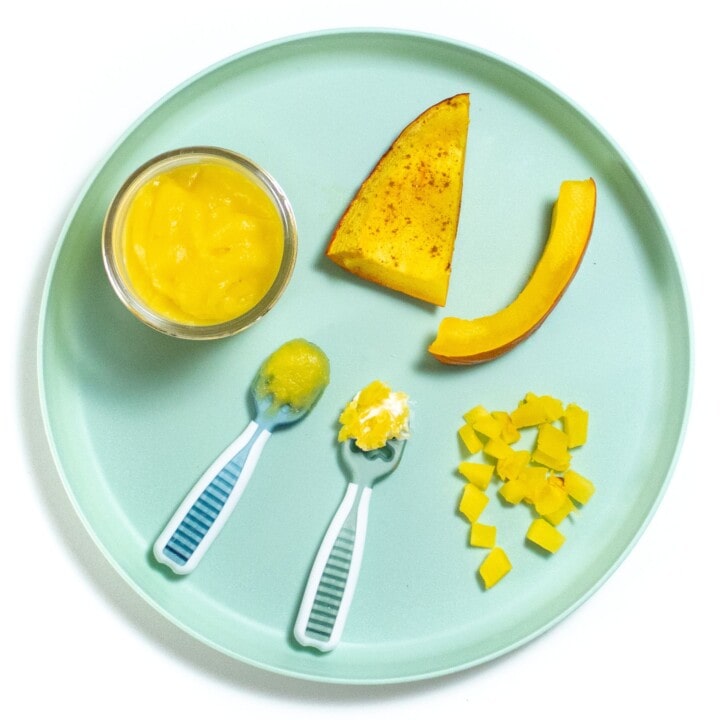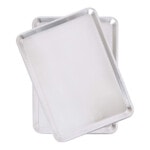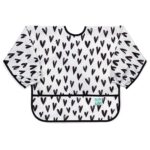Pumpkin for Baby-Led Weaning
Learn how to serve pumpkin for baby-led weaning or making purees with this informative guide. Pumpkin is full of essential nutrients, making it a great first food for babies 6 months and up. Serve pumpkin as a baby food puree, as a solid for the finger food stage, or for baby-led weaning.
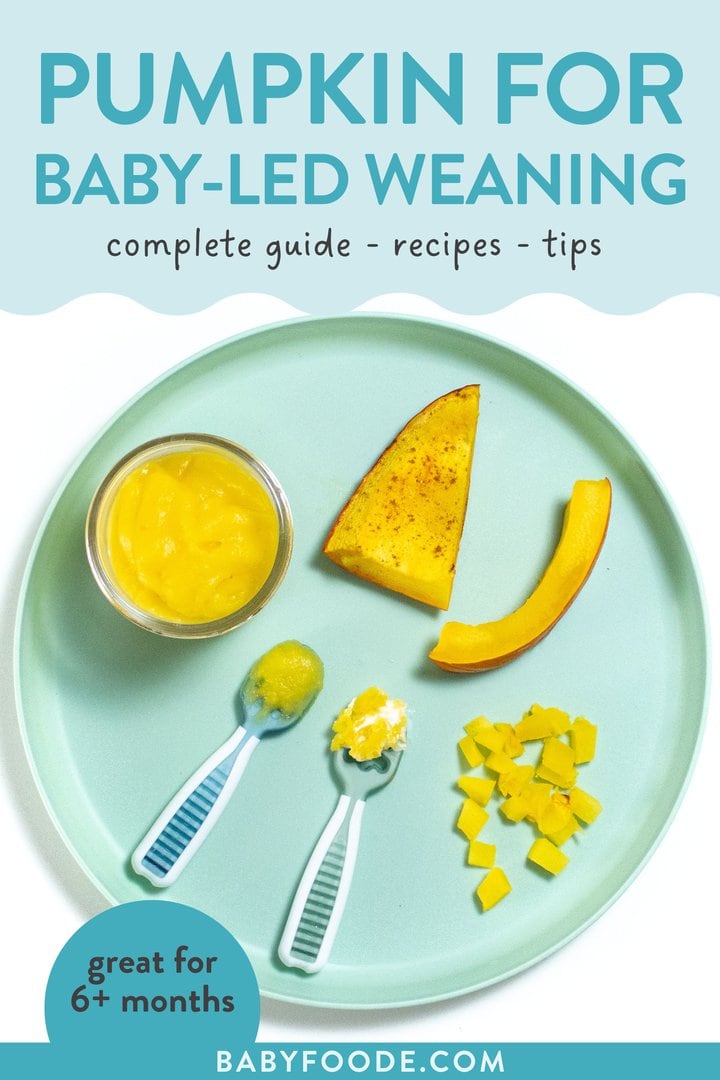
Medically reviewed and cowritten by Jamie Johnson, Registered Dietitian Nutritionist (RDN), and Lauren Braaten, Pediatric Occupational Therapist (OT).
Pumpkin for Baby
Looking to serve pumpkin to your baby but not sure how?
Then this complete guide on pumpkin for baby-led weaning is for you!
Below you will find everything you need to know on how to cook and serve pumpkin to your little one – the health benefits, how to serve pumpkin to your baby for baby-led weaning, how to store these recipes, FAQs, and so much more!
First time making homemade baby food? Then, I would suggest that you start by reading my very in-depth Complete Guide to Baby-Led Weaning – which covers what exactly is baby-led weaning, to every parent’s concern of baby-led weaning and choking, this guide goes over it all. I will also share how to know when baby is ready for BLW, the top 10 best first foods, a helpful sample blw feeding schedule, helpful tools to have on hand, and much much more!
You can also check out my best-selling cookbook for even more information and recipes!
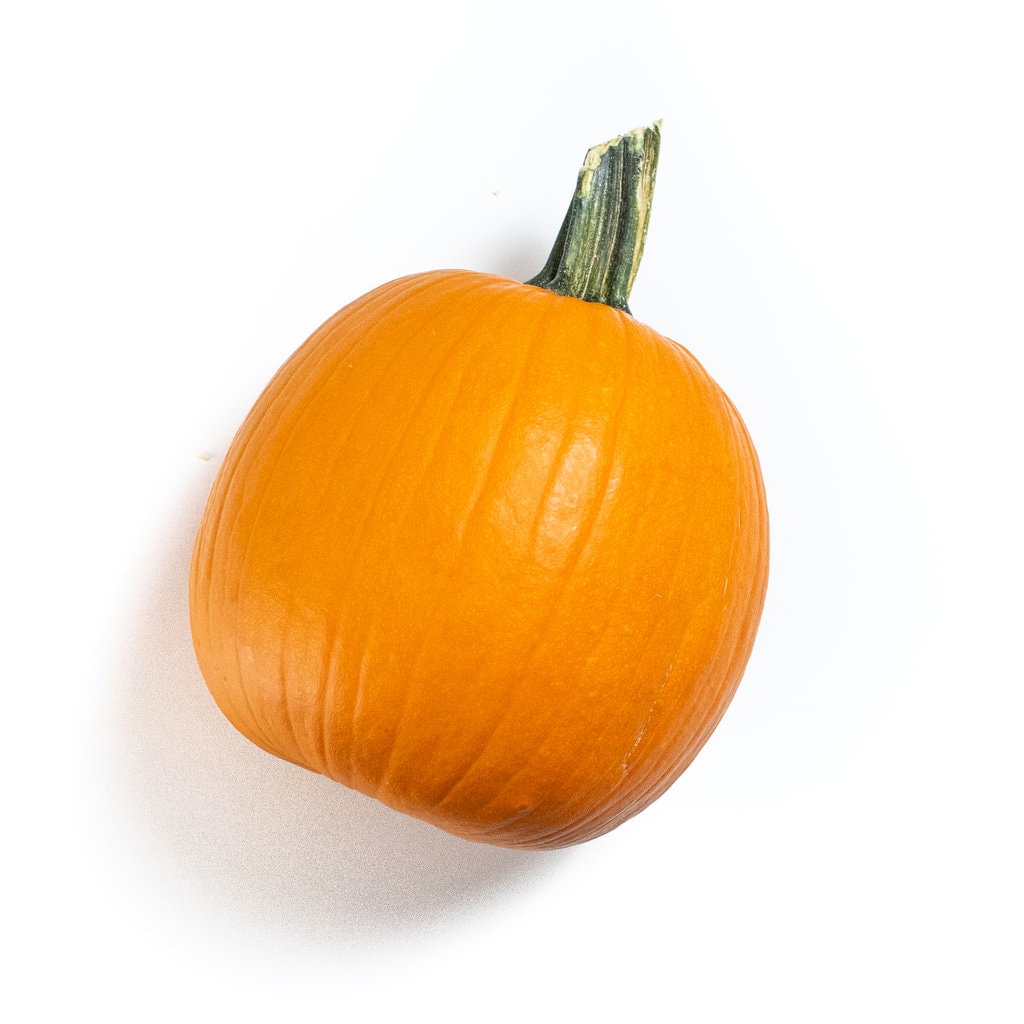
Reasons to Love Pumpkin for BLW
- Great for baby-led weaning – 6+ months
- Also great for the finger food stage – 9+ months
- Full of essential nutrients for baby
- Different ways for baby to eat – spoon-fed or self-feed
- Easy to make – minimal prep work required
Health Benefits of Pumpkin for Baby
Pumpkin is packed with health benefits for your baby, making it an excellent choice to serve.
- Full of fiber for a healthy digestive system
- An excellent source of vitamin A, necessary for eye health and immunity
- Is a good source of iron to prevent iron deficiency anemia and contains vitamin C to help absorb the iron
- Contains antioxidants beta carotene and vitamin E
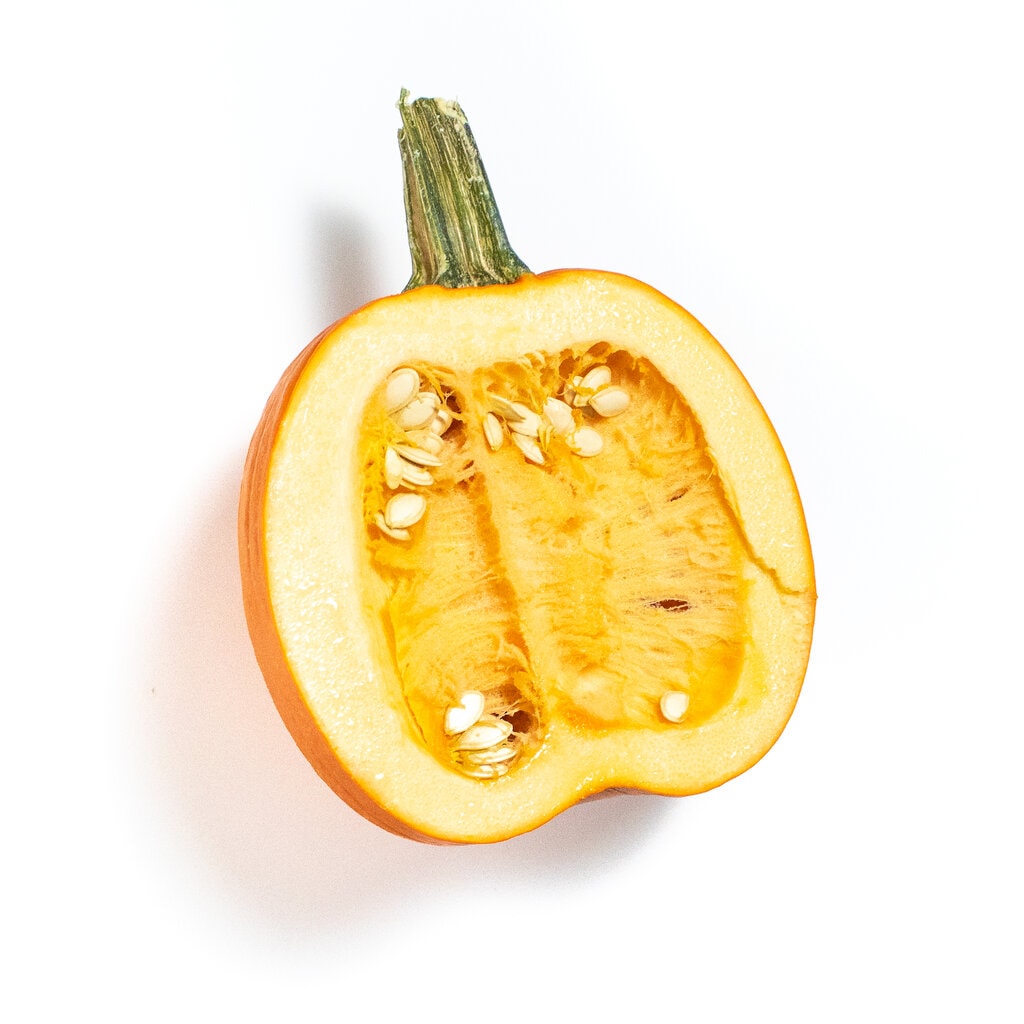
Spices to Add
Adding spices to your baby’s foods is a great way to introduce more complex flavors at an early age. In particular, adding a little bit of ginger, cinnamon, chili powder, garam masala, or sage can really make pumpkin recipes shine.
Frequently Asked Questions
Pumpkin can 100% be your baby’s first food if you want it to be. It is recommended to wait to introduce the top eight allergen foods to your baby once a few other well-tolerated foods have been introduced, but otherwise foods can be introduced in any order so choose whatever you are most excited for your baby to have.
No, pumpkin is not a common allergen. However, as with any food, start with a small portion and be aware of any signs that might be an allergic reaction after introducing it.
No, cooked pumpkin is not a common choking hazard for babies, but its seeds can be.
Steps on How to Prepare Pumpkin for BLW
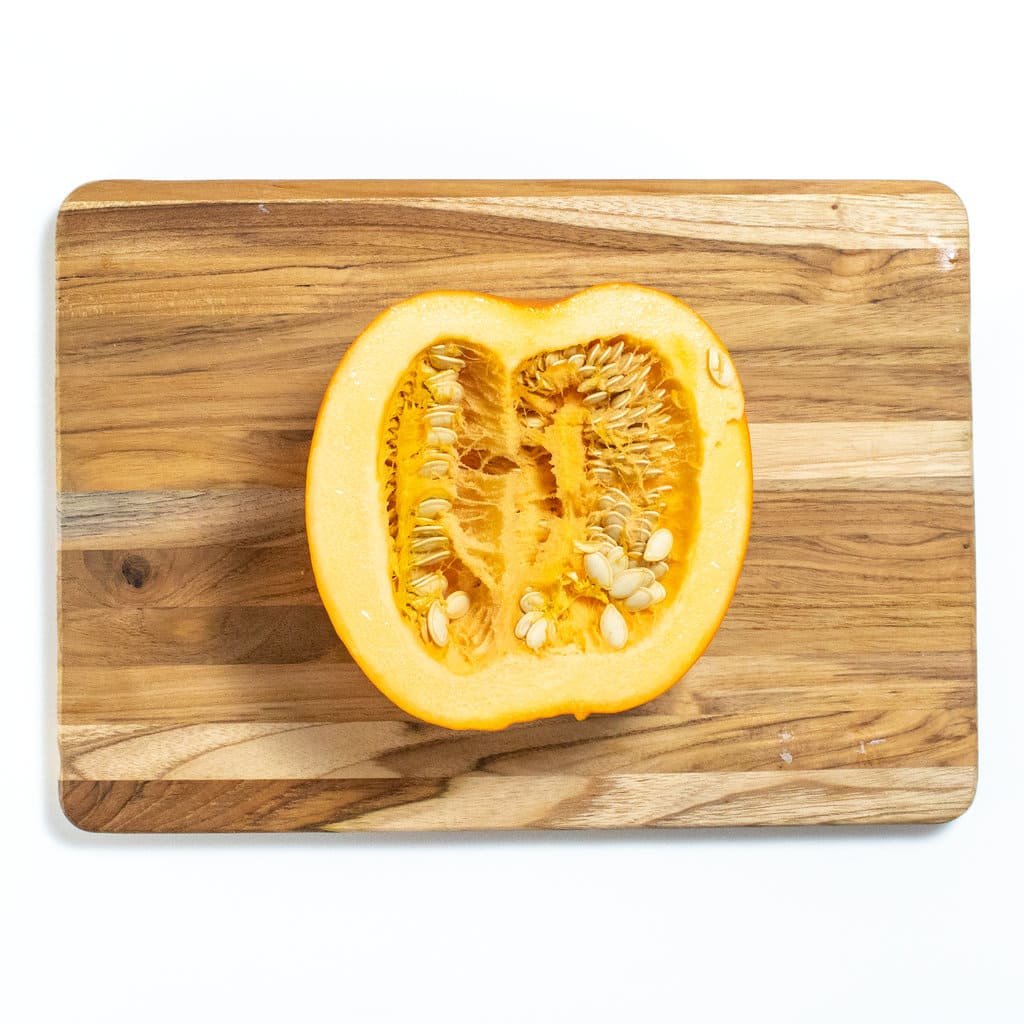
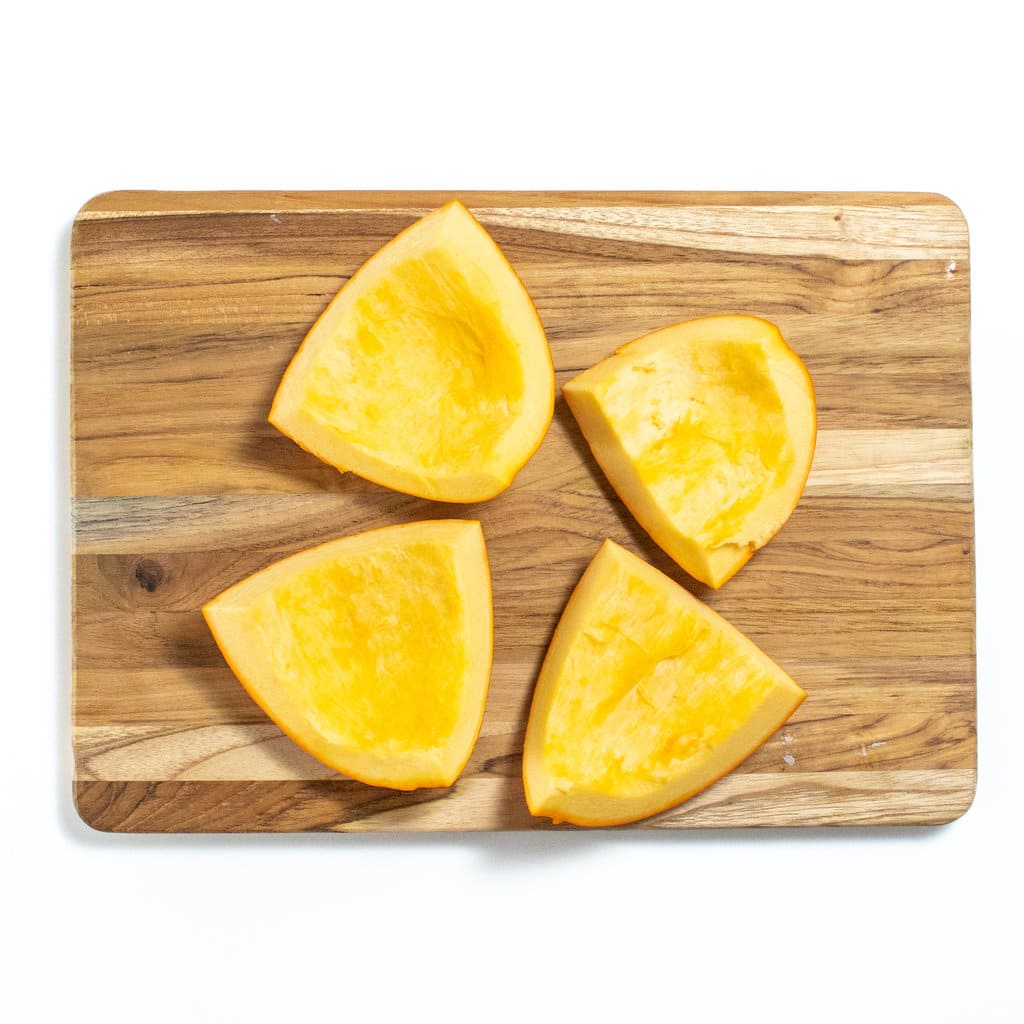
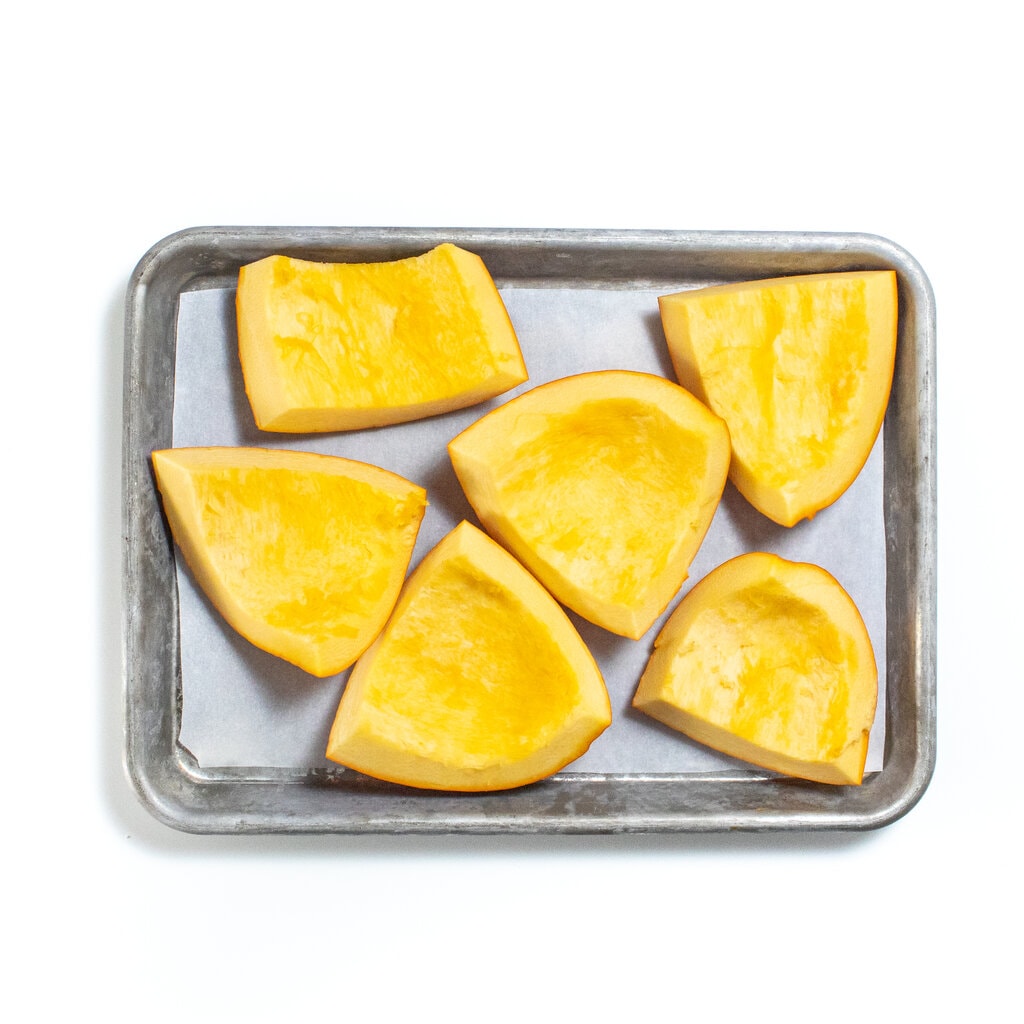
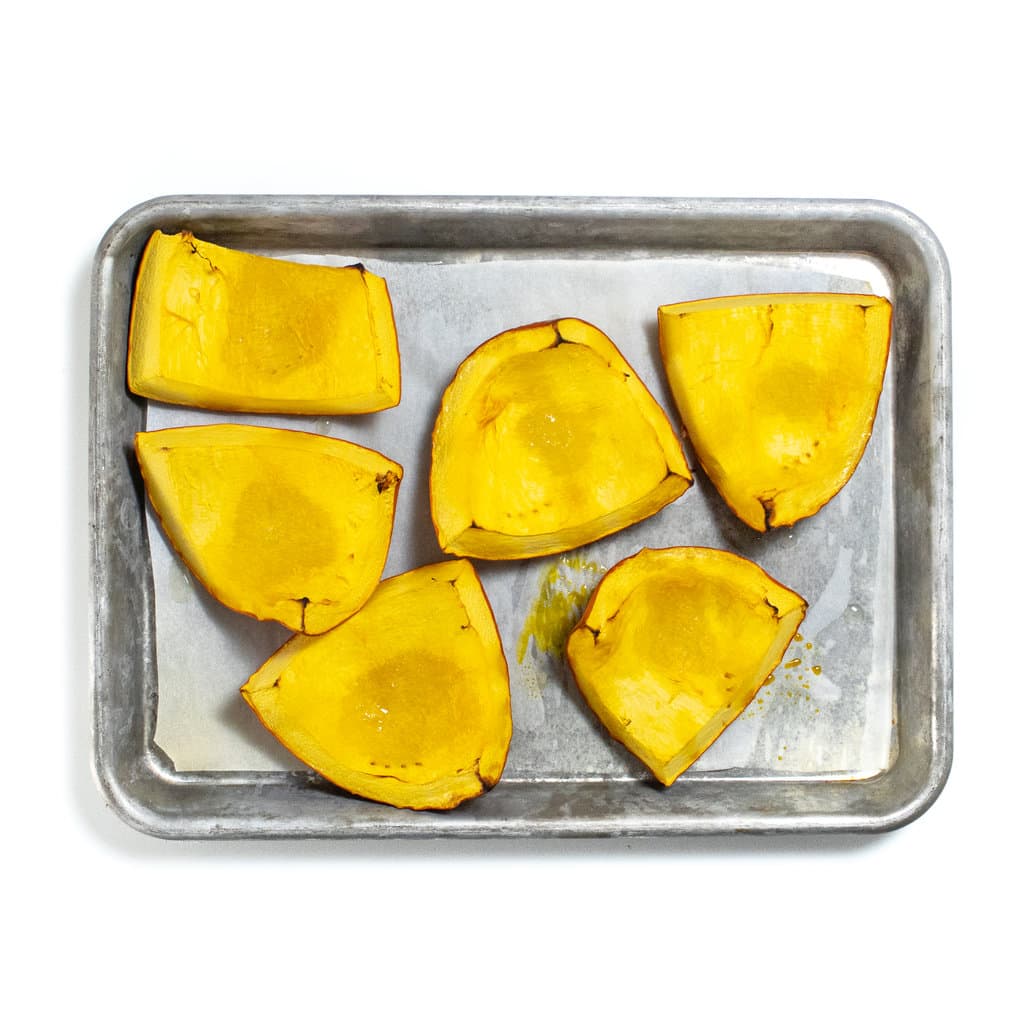
There are several different ways to prepare pumpkin for your baby. Here are some of our favorite ways:
Roasted
Start by slicing off the top off the pumpkin, then cut lengthwise down the middle until you have 2 halves of a pumpkin, de-seed and chop the pumpkin into smaller sections. Place the pumpkin on a baking sheet and roast for 30-45 minutes or until tender when pricked with a fork.
Steamed
Cut a pie pumpkin into bigger chunks, peel, and then roughly chop into smaller pieces before placing the pumpkin cubes into a steamer basket over 2 inches of boiling water for 10-15, or tender when pricked with a fork.
Boiled
Cut a pie pumpkin into bigger chunks, peel and then roughly chop into smaller pieces. Place these pumpkin cubes into a medium saucepan, add enough water to cover the pumpkin and bring to a boil. Reduce to simmer and cook for 15 minutes or when tender with pricked with a fork.
Pumpkin Puree: You can offer purees and still allow your baby to lead the way with self-feeding by offering the puree on a self-feeding spoon, by placing a few spoonfuls of the puree directly on the tray or in a bowl for your baby to dip their fingers into, or you can even use the puree as a dip for solid foods such a banana or piece of toast.
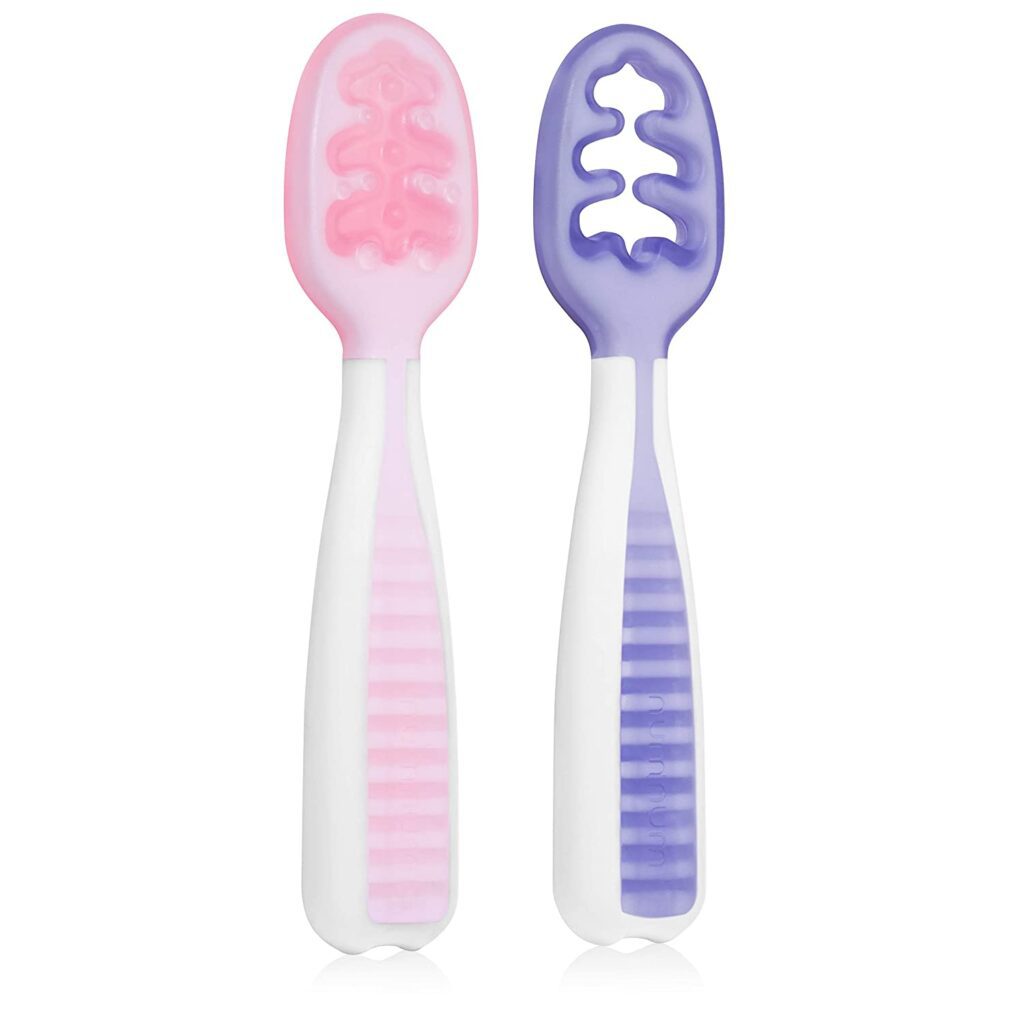



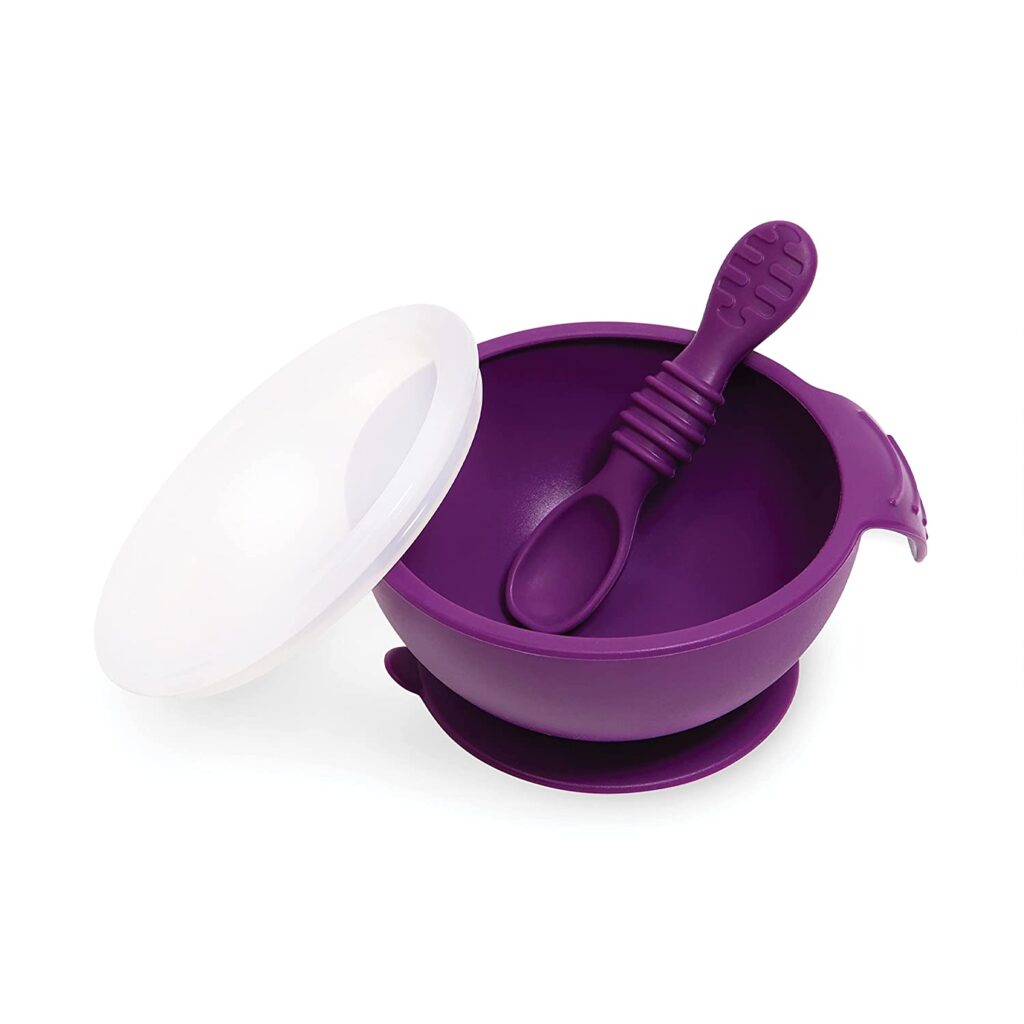

Helpful Tools
Here are some products that will help make preparing and serving pumpkin to your baby even easier! To find even more products that I love, make sure to check out my online shop.
- Highchair
- Saucepans
- Steamer Insert with lid
- Easy to hold fork and spoon
- GOOtensils
- Bowl or Sectioned plate
- Open lid cup
- Bib with catch pocket
- Sleeved bib
- Splat mat to cover the floor
Baby-Led Weaning Feeding Tips
- When choosing fresh pumpkin for cooking, look for smaller squash called “sugar pumpkins” or “pie pumpkins.”
- Choose pumpkins between 4-8 pounds, and don’t worry if the outside looks a little dull in color. As long as you don’t see any big bruises or soft spots, the pumpkin should be fine. Pumpkins have a long shelf life and will keep for months at cool room temperature.
- Time saving tip: look for pre-peeled and cubed pumpkin in the produce section or the frozen food aisle. Both of those are great options if you want to save time and steam/boil the pumpkin.
- If choosing canned pumpkin, be sure to avoid pumpkin pie filling, which will have a lot of added sugar.
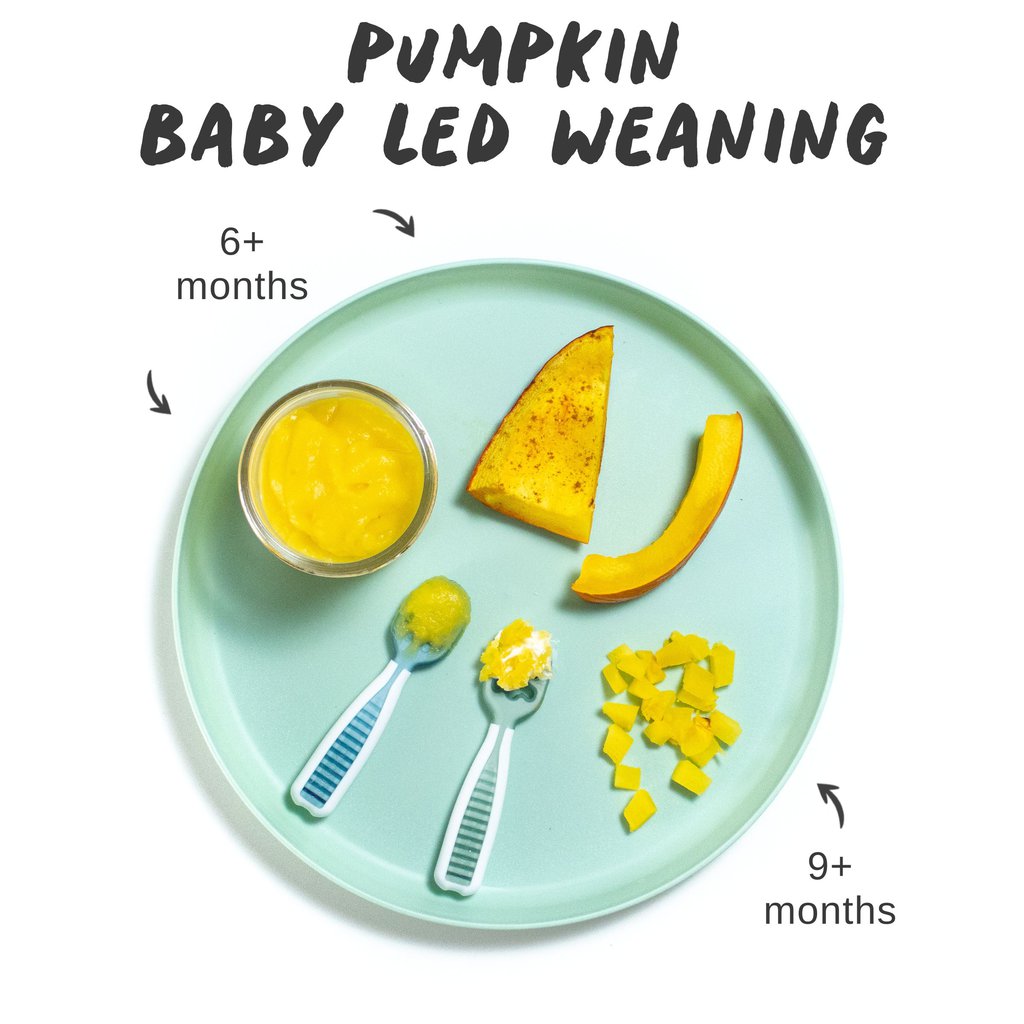
How to Serve Pumpkin for Baby-Led Weaning
Pumpkin can be a choking hazard for your baby, regardless of whether you are doing baby-led weaning starting at 6 months or during the finger foods stage at 9 months, so it is important to cook and serve it properly.
Mashed or wedges (cooked) – (6-9 months): Baby can eat cooked and mashed pumpkin with their hands or from a pre-loaded spoon. They can also gnaw and munch on wedge-shaped pieces (about the size of 2 adult fingers in width) of well-cooked pumpkin, with the rind on or off at this stage.
Bite-sized pieces (cooked) – (9-12+ months): Bite-sized pumpkin pieces will allow your baby to practice using their pincer grasp, which is developing at this age. You can also continue to offer mashed pumpkin or large pieces of well-cooked pumpkin (with rind removed at this age). Once you toddler is around 12-24 months, you can start to offer bite-sized pieces of cooked pumpkin with a fork to encourage utensil use.
Foods to Pair with Pumpkin
Pumpkin can be paired with just about anything for a well-rounded meal. But since it lacks protein, include a protein source to help with the fullness factor. It’s important for babies and toddlers to get enough fats to help support their brain development, and since pumpkins are lacking in fat, pair them with a fat source.
- Proteins: chicken, beef, fish, shellfish, pork, turkey, yogurt, beans, tofu, quinoa, lentils, eggs
- Fats: Full fat yogurt, whole milk, whole milk kefir, butter, egg yolks, nut butters, salmon, olive oil
Storage
You can store cooked pumpkin in an air-tight container in the fridge for up to 4 days.
More Pumpkin Recipes for Baby
Homemade Pumpkin Yogurt
Pumpkin Pancakes
Family-Favorite Pumpkin Pasta
Pumpkin Pie Smoothie for Baby + Toddler
Whole Grain Pumpkin Waffle Dippers
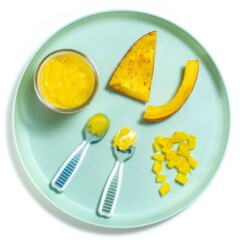
Get the recipe: Pumpkin for Baby-Led Weaning
Ingredients
- 1/2 small pie pumpkin, deseeded and cut into chunks
- pinch cinnamon (optional)
Instructions
- Preheat the oven to 425° F. Line a baking sheet with parchment paper.
- Place half of a pumpkin onto a cutting board.
- Deseed the pumpkin and cut it into large chunks.
- Place the chunks onto a the baking sheet and place in the oven.
- Bake for 30-40 minutes or until tender when pricked with a fork.
- Cut or mash into age appropriate pieces.
Notes
- Place a few spoonfuls of purees directly on the tray or in a bowl for your baby to dip fingers into. Model how to dip your fingers into the puree and bring them to your mouth, to taste some.
- Offer your baby a pre-loaded self-feeding utensil and hold it out for them to grasp or set on their tray.
- Use a solid food as a dipper. You can also offer a soft stick-shaped piece of food, such as a soft roasted carrot or bread lightly toasted and cut into strips to dip into the puree.
Did you make this recipe?
Tag @babyfoode on Instagram and hashtag it #babyfoode!


